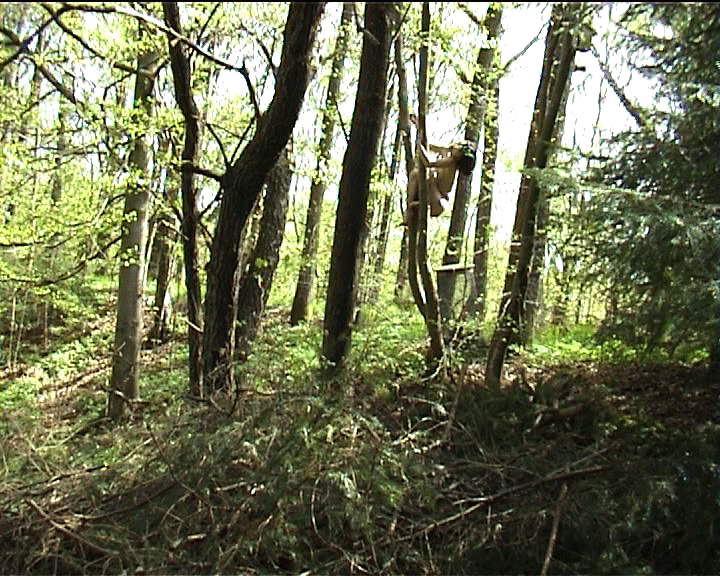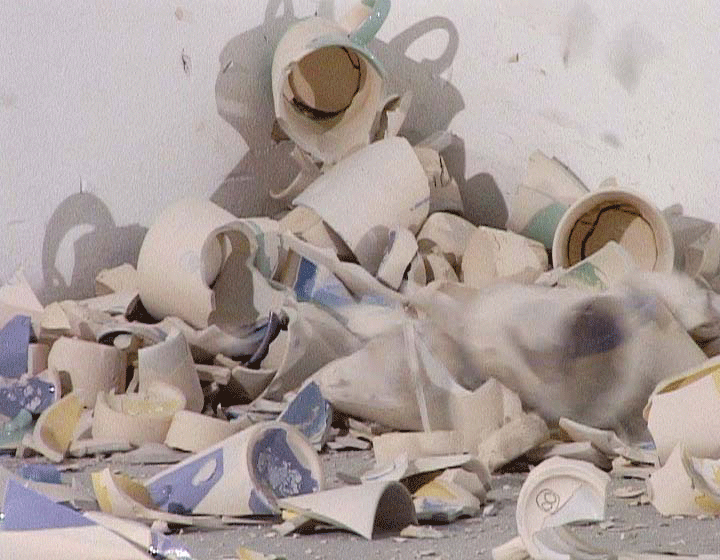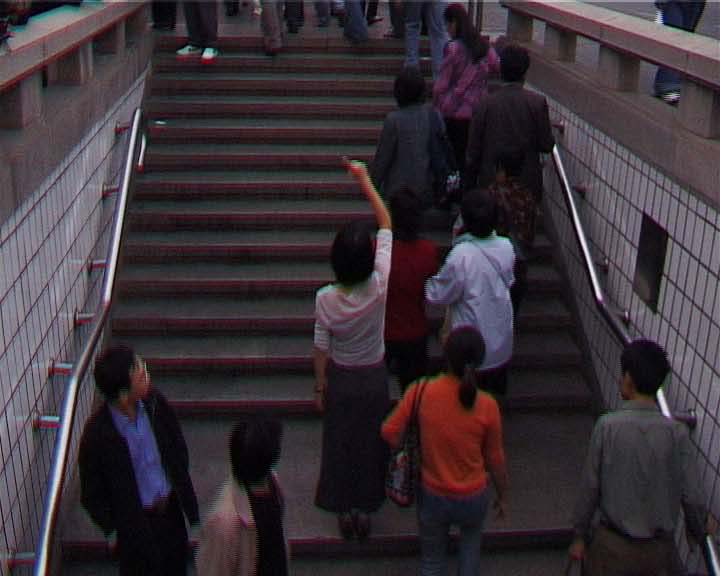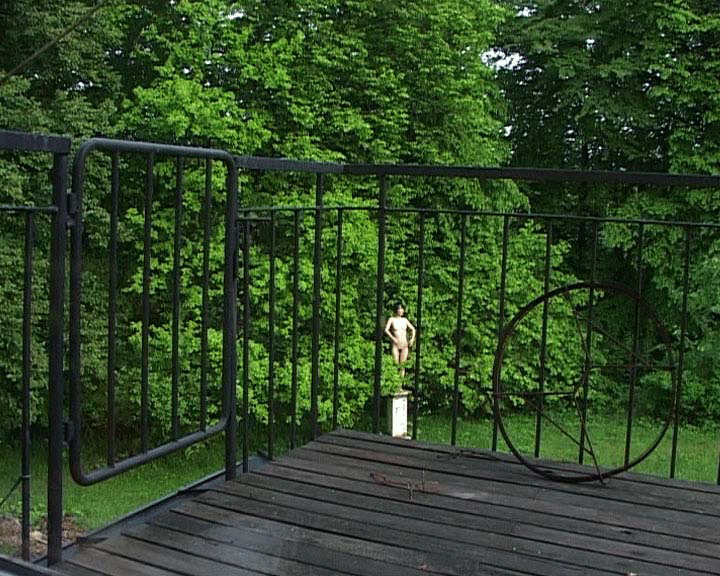28 April – 27 May 2006
Opening: 28th April 2006, 6 – 10 p.m.
Humor, lightness and grace as well as deep irony and dramatic sceneries characterize the works of the Chinese artist Kan Xuan. While using simple and clear images, she expresses her desire for a more direct, simple and original understanding of life.
Kan Xuan, born 1972 in XuanCheng, lives and works in Beijing and Amsterdam. As a visual artist she chooses different media like photography and video installation. Her first solo exhibition in Europe with BüroFriedrich concentrates on her video works. In a representative choice of her characteristic filmlets, projections of eight different works from the years 1999-2006, cumulate in a sound and image intensive installation.
Besides the tradition of Chinese picture language, Kan Xuan works in the language of international art and in particular of the international media. Using clearly and simply structured filmlets she describes in direct and understandable images what affects her personally. The single sequences are technically perfect, and to some extent composed to be visually irritating.
The peculiar spirit of Kan Xuan’s cheeky-feminine personality affects the short episodes of her works. With her maidenly light narration paired with deep irony she takes a stand against personal and social conditions. Her stories amuse, raising a smirk in the viewers face, and at the same time broach the issue of personally unpleasant or theoretically difficult problems. They do not try to provide an answer, but tell a story, whose continuation is optional.
Like this, the work Objects emerged from the preoccupation with the object and its material and color. Filmed in black and white, objects fall into a liquid. A new color from the palette of grey tones are assigned to them – eggs are white, blood is black, coins are white.
100times shows a 100 cups of the same series of manufacture, one after another smashed on the ground. With accent on the working process, each cup has been filled before with a different amount of ceramic glaze and baked in the oven. Manipulated in this way, each one has a different tone.
The work Countdown, however, is an attempt by the artist to grasp a moment in time. Standing on the historical Tiannamen Square, she counts the 60 seconds of a minute backwards. Counting the countdown with her fingers, she tries to reunite the past and the future for a moment, before she dissappers into the crowd.
Kan Xuan is currently showing her video work at the 9th Havanna Biennial, Cuba and the Museo Colecciones ICO, Madrid. Also, her work is on display at the Ikon Gallery, Birmingham.





Biography
Kan Xuan lives and works in Beijing, China and Amsterdam Netherlands
1972 Born in Xuan Cheng, An’hui, China
1993-1997 China Art Academy, Hang Zhou, China
2001-2003 The Royal Rijksacedamy Amsterdam, Netherlands
Selected Exhibitions
2006
9th Havana Biennial 2006, Wifredo Lam Center, Havanna, Cuba
‘Exploding Television – Satellite of Love’, International Film Festival Rotterdam, Netherlands,
A happy girl, IKON Gallery, Birmingham, UK
Never go out without my DV Cam-Video art from China, Museo Colecciones ICO, Madrid, Spain
Close Reading, Galerie Julitte Jongma, Amsterdam, Netherlands
20 Desarreglos – Arte Contemporáneo de Brasil, Museo del Artes Visuales, Santiago de Chile
2005
Mahong. Chinesische Gegenwartskunst aus der Sammlung Sigg, Kunstmuseum Bern, Bern, Schweiz
Focus, China Museum of art, Beijing, China
The Second Guangzhou Triennial, GuangDong Museum of art, Guangzhou, China
Prix de Rome 2005, De Apple Foundation, Amsterdam, Netherlands
I Still Believe in Miracles, Museum de Art moderne de la Ville de Paris, France
Double Happiness, BizArt Centre, Shanghai, China
A Molecular History of Everything, Australian Centre for Contemporary Art, Australia
Guangzhou Photo Biennial 2005, Paris, France
2004
Kan Xuan and Cuixiuwen, Museum for Contemporary Art, Bordeaux, France
A l’ Est du Sud de l’ Ouest/ A l’ Ouest du Sud de l’ Est, Villa Arson, Centre National d’Art Contemporain, Nice, France
Epiphytes, Classic botanical garden, Amsterdam, Netherlands
Object System : Ding Nothing, ARCO2004, Madrid, Spain
I miss you, BizArt Centre, Shanghai, China
2003
Doing nothing anywhere is, Vitamin Creative Space, Guangzhou, China
Chine: génération vidéo, MEP – Maison Européene de la Photographie, Paris, France
Panorama da Art Brasileira 2003, Sao Paulo Modern Art Museum, Brazil
Alors, La Chine?, Centre Georges Pompidou, Paris, France
New Zone, Zacheta National Gallery, Warsaw, Polan
Everyday , Kunstforeningen Copenhagen, Denmark
Video Festival, Brussels, Belgium
Echigo-Tsumari Short video Festival, Tokyo, Japan
Under Construction, Tokyo Opera City Art Gallery, Japan
2002
C’ est pas du cinema, Le Fresony studio national, France
Video art, Chinese European Art center, Xiamen, China
The First Guangzhou Triennial, Guangzhou Museum of art, Guangzhou, China
Fantasia-2, Beijing, China
2001
Fantasia-1, Seoul, Korea
Or Emptiness!, BizArt Centre, Shanghai China
1999
Wu Shi Ren Fei , Photography Exhibition, Shanghai, China
Art for Sale, Shanghai, China
Residencies, Fellowships, Prices
2005 Prix de Rome 2005, Basic Prize, Netherlands
2002-2003 Rijksakademie van Beeldende Kunsten, Dutch ministry of Education, Culture and Science, NL
2002 Dutch Ministry of Foreign, DCO, IC, NL
